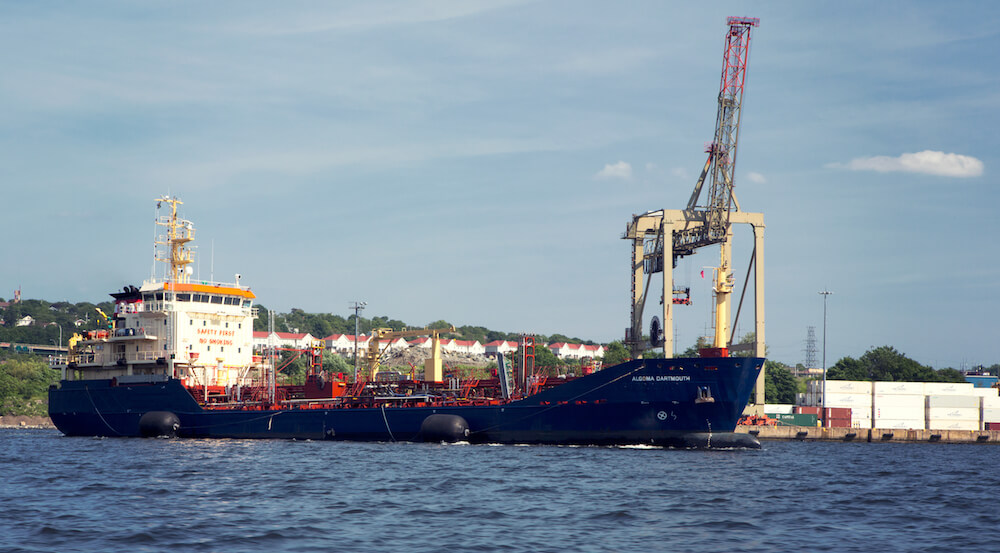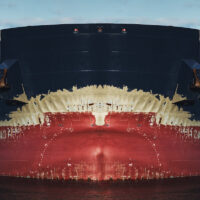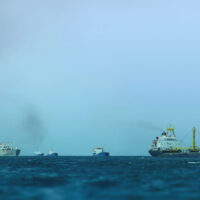This Chapter draws on the experience of other national jurisdictions on centralized Marine Casualty Management systems.
Executive Summary
Clear Seas is an independent, not-for-profit organization that provides impartial and evidence-based research to inform the public and policy makers about marine shipping in Canada.
Accordingly, we are providing this digest on Transport Canada’s Tanker Safety Expert Panel’s second report titled A Review of Canada’s Ship-Source Spill Preparedness and Response: Setting the Course for the Future, Phase II – Requirements for the Arctic and Hazardous and Noxious Substances Nationally.
The Phase II report is divided into three chapters: The Canadian Arctic; Hazardous and Noxious Substances; and Marine Casualty Management. For ease of reference this digest only discusses Chapter 3, on Marine Casualty Management
This digest is not meant to be inclusive of all the Review’s commentary and/or recommendations, nor are the items mentioned necessarily in the same order as the original report.
Message from the Executive Director
We live in a complex multi-jurisdictional country – both blessed and challenged by the longest coastline in the world, bounded by three ocean basins and through which flows the complex St. Lawrence Seaway system. All of which makes marine casualty management a difficult endeavour.
Consequently, there is a need to improve time-sensitive decision-making during incidents, which if not managed quickly and efficiently, can escalate into marine pollution events.
This Chapter draws on the experience of other national jurisdictions on centralized Marine Casualty Management systems. In so doing it makes a critical recommendation for the Canadian situation that Clear Seas believes is worthy of government consideration and implementation.
Chapter 3 Marine Casualty Management
Emergencies at sea, such as vessel groundings, engine failures, loss of propulsion or steering, and on-board fires are familiar occurrences to many mariners. With standard procedures and training, most of these events are handled on board with few impacts to the crew, the vessel itself or the environment. On rare occasions, a broader and more sustained response effort is required to rapidly mitigate the situation to prevent escalation into a catastrophic event, like a major collision, a sinking, or a spill.
Depending on the situation, different expertise may be required quickly to avert a disastrous event and support mitigation efforts. The sheer number of authorities involved and the different powers that may be brought to bear in a marine casualty can make decision-making very complex, challenging, and, at times, slow—all of which increase the risk of spills and pollution consequences.
By way of example the Report refers to British and Australian experiences.
In 1996 the grounding of the oil tanker MV Sea Empress (a single-hulled oil tanker) off the coast of Wales, resulted in 72,000 m3 of crude oil being released. The subsequent review of the incident concluded that the decision-making by committee, which occurred during the response, was highly ineffective. It urged the government to take a stronger role in managing future marine casualties and recommended that a single decision-maker be appointed who has the power to make and enforce decisions. The government created the position of the Secretary of State’s Representative for Maritime Salvage and Intervention (also referred to as ‘SOSREP’) within the United Kingdom’s Maritime and Coastguard Agency.
This decision proved to be wise. Compare the fate of the MV Sea Empress to that of the MSC Napoli, a container vessel in the English Channel that was seriously damaged during a storm in 2007 while en route from Belgium to Portugal. In this case, the SOSREP acted quickly because any delay could have resulted in the vessel breaking apart in the English Channel and potentially polluting the whole region for years. Only relatively minor pollution resulted.
Australia, with a jurisdictional landscape comparable to that of Canada has adopted a similar marine casualty management model by way of a Maritime Emergency Response Commander (also known as the MERCOM), who can intervene in incidents within federal waters and, under certain circumstances, in state or territorial waters (i.e., those waters within three nautical miles of the coast). Australia has found that, overall, a predetermined mutual understanding between all levels of government, and a thorough consideration of their positions, has led to decreased tensions and more efficient decision-making during time-sensitive incidents.
In Canada, in cases where trained crews using standard procedures cannot manage on board vessel emergencies, both Transport Canada and the Canadian Coast Guard (CCG) have powers to intervene in maritime casualties. As well, local Port Authorities have certain powers to direct vessels that are about to enter or depart the port.
These various powers can lead to conflicting directions. When pollution occurs, or there is a clear risk of pollution, the CCG, with its role as Federal Monitoring Officer or On-scene Commander, is well positioned to act or direct a response. Its implementation of the Incident Command System will facilitate this even further.
However, some past marine casualties in Canada have demonstrated that there exists an operational grey zone where the threat of pollution is a matter of debate. It is here that an opportunity exists to dramatically improve decision-making to ensure that decisions are taken first and foremost in the public interest, rather than being influenced primarily by jurisdictional, political or financial pressures.
Given Canada’s complex jurisdictional landscape, the management of marine casualties is clearly a complicated problem and one that should be examined closely. There are valuable lessons to be learned from the United Kingdom and Australian approaches.
The report noted that through its engagement with industry stakeholders, as well as with international counterparts, there was near-unanimous support for these decision-making models – and urged the Government of Canada to examine their benefits.
For example, a new centralized decision-making authority’s powers of intervention should be triggered when a marine incident has caused or threatens material damage to a vessel, and in its opinion the occurrence may, or will cause significant pollution to Canada’s waters or coastline, and when the use of the powers is urgently needed.
In addition, the key functions of such a centralized authority should include:
- Acting at the earliest point during an incident to assess the risk to safety, to expedite its conclusion, and to ensure that increasing risk is evaluated and appropriate measures taken to prevent or respond to such an escalation;
- Monitoring all response measures to significant marine casualty incidents;
- If necessary, exercising ultimate control by implementing the powers of intervention, acting in the overriding interests of Canada and its environment;
- Participating in major national and international exercises; and
- Reviewing all activities after significant incidents and exercises, and sharing lessons learned.
Accordingly, the panel report recommended that the Government improve the timeliness of decision-making for marine casualties by establishing a centralized marine casualty decision-making authority, acting in the public interest, similar to those established in the United Kingdom and Australia.
Places of Refuge
As an important related issue, the panel also noted that it had heard many concerns over so called places of refuge, which are defined as ideal locations to shelter vessels in distress. Finding such locations can be a challenge, but doing so is also a critical part of coastal contingency planning. The International Maritime Organization recognizes that the best option to minimize pollution from a vessel suffering from a casualty is to transfer the polluting cargo and fuels off the vessel and that this is best done in a place of refuge.
However, the decision to bring a potentially polluting vessel to a coastal area can create both environmental and economic concerns, from local populations and authorities.
While these decisions must be taken on a case-by-case basis, the panel was impressed by Norway’s approach, which maintains and continuously updates a list of possible places of refuge, which is also publicly available. This enables the public to openly comment on the potential sites and highlight important (and perhaps unknown) considerations to the government, so that any risks or challenges can be considered as part of decision-making processes.
The United States Coast Guard uses a similar approach that builds places of refuge considerations into its Area Contingency Plans.
Should the Canadian Government appoint an official similar to the Secretary of State’s Representative in the United Kingdom, or the Maritime Emergency Response Commander in Australia, this type of regular consultation on places of refuge could be an essential part of that position’s role.



